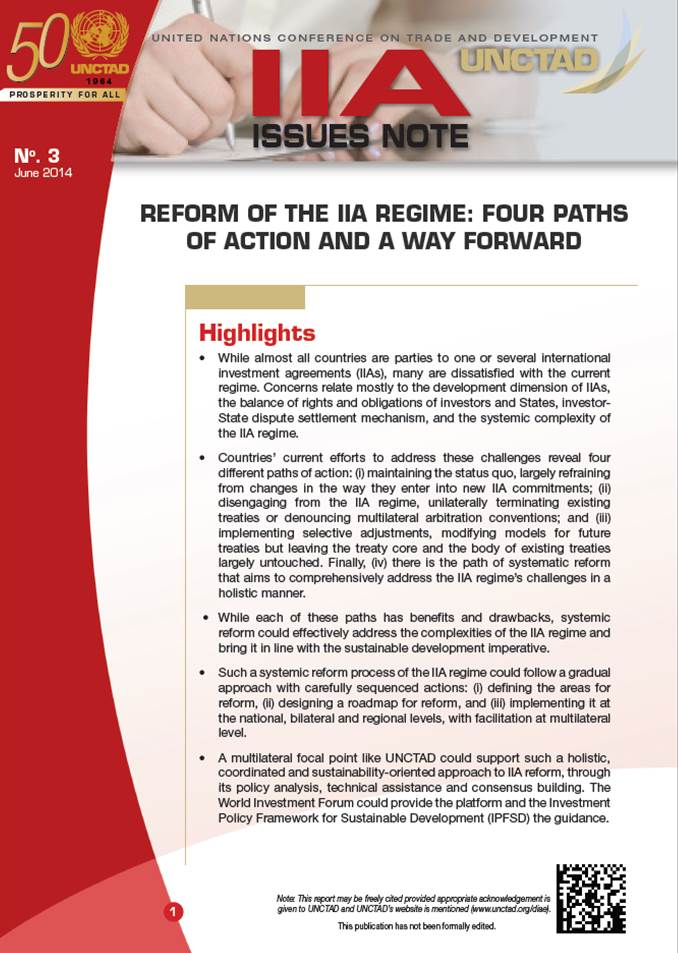IIA Issues Note - Reform of the IIA Regime: Four Paths of Action and a Way Forward
While almost all countries are party to one or more IIAs, many are dissatisfied with the current regime. Concerns relate mostly to the development dimension of IIAs, the balance of rights and obligations of investors and States, and the systemic complexity of the IIA regime. Countries' current efforts to address these challenges reveal four different paths of action:
- some aim to maintain the status quo,largely refraining from changes in the way they enter into new IIA commitments
- some are disengaging from the IIA regime, unilaterally terminating existing treaties or denouncing multilateral arbitration conventions
- some are implementing selective adjustments, modifying models for future treaties but leaving the treaty core and the body of existing treaties largely untouched
- there is the path of systematic reform that aims to comprehensively address the IIA regime's challenges in a holistic manner.
While each of these paths has benefits and drawbacks, systemic reform could effectively address the complexities of the IIA regime and bring it in line with the sustainable development imperative. Such a systemic reform process of the IIA regime could follow a gradual approach with carefully sequenced actions:
- defining the areas for reform
- designing a roadmap for reform
- implementing it at the national, bilateral and regional level, with facilitation at the multilateral level.
In this context, UNCTAD's Investment Policy Framework for Sustainable Development (IPFSD), with its comprehensive list of options designed to support rule-makers in shaping modern investment policies, could represent the common point of reference, while the IIA Conference at UNCTAD's World Investment Forum (Geneva, 13-16 October) could provide a platform for discussing this multifaceted issue.
















